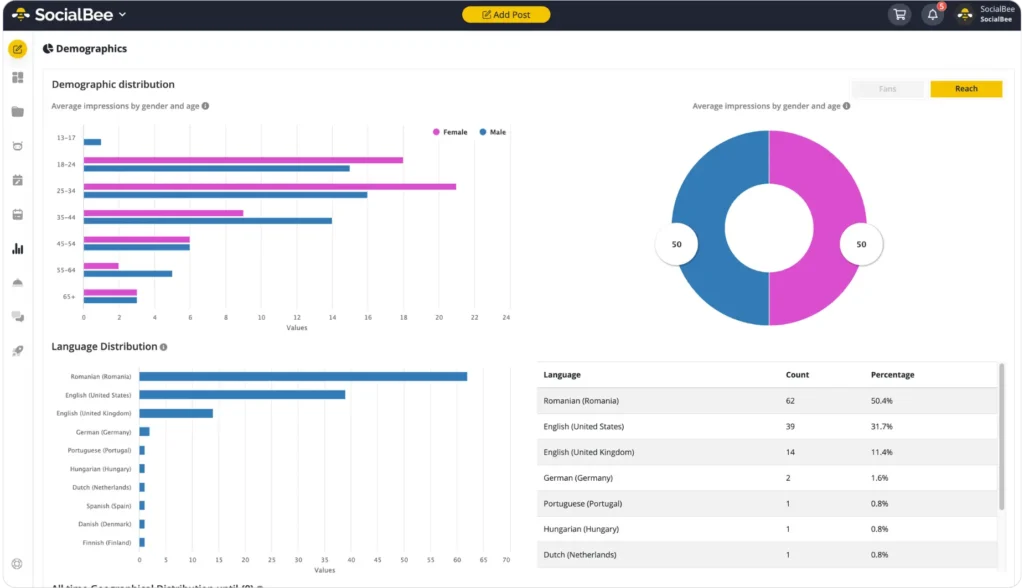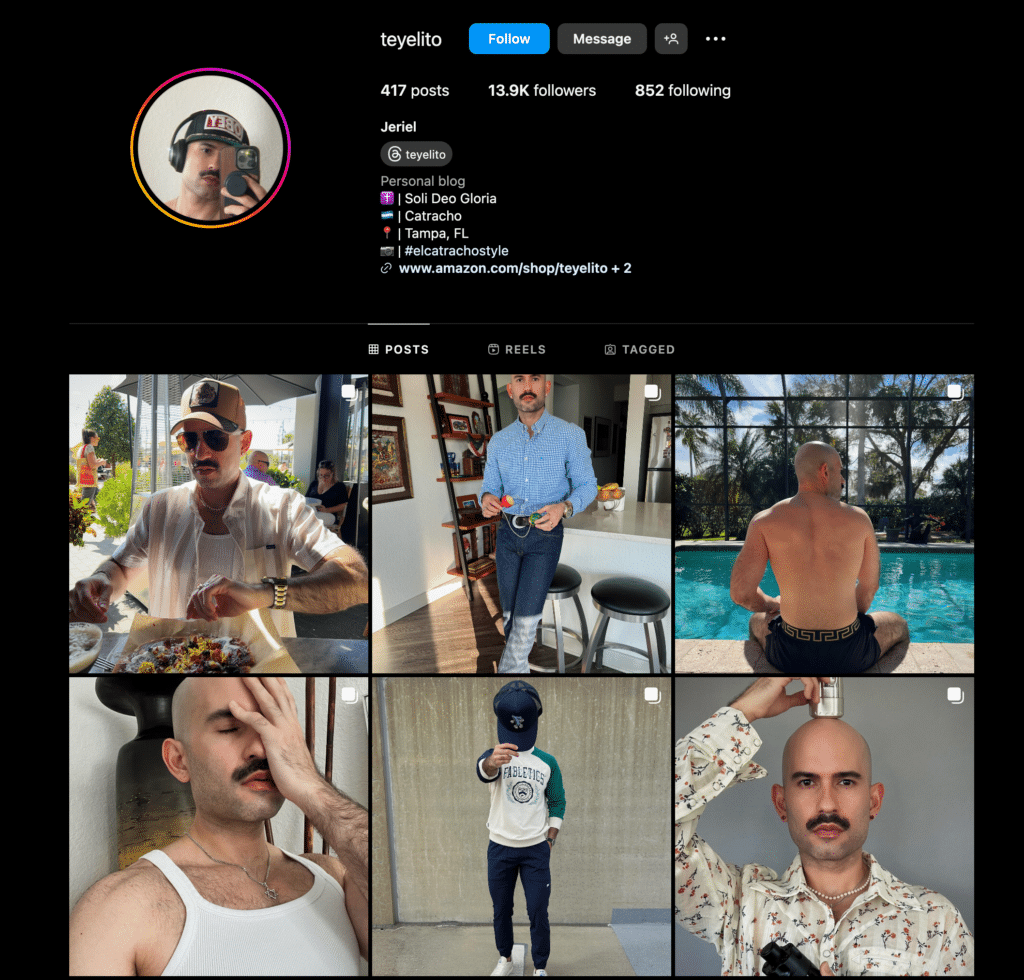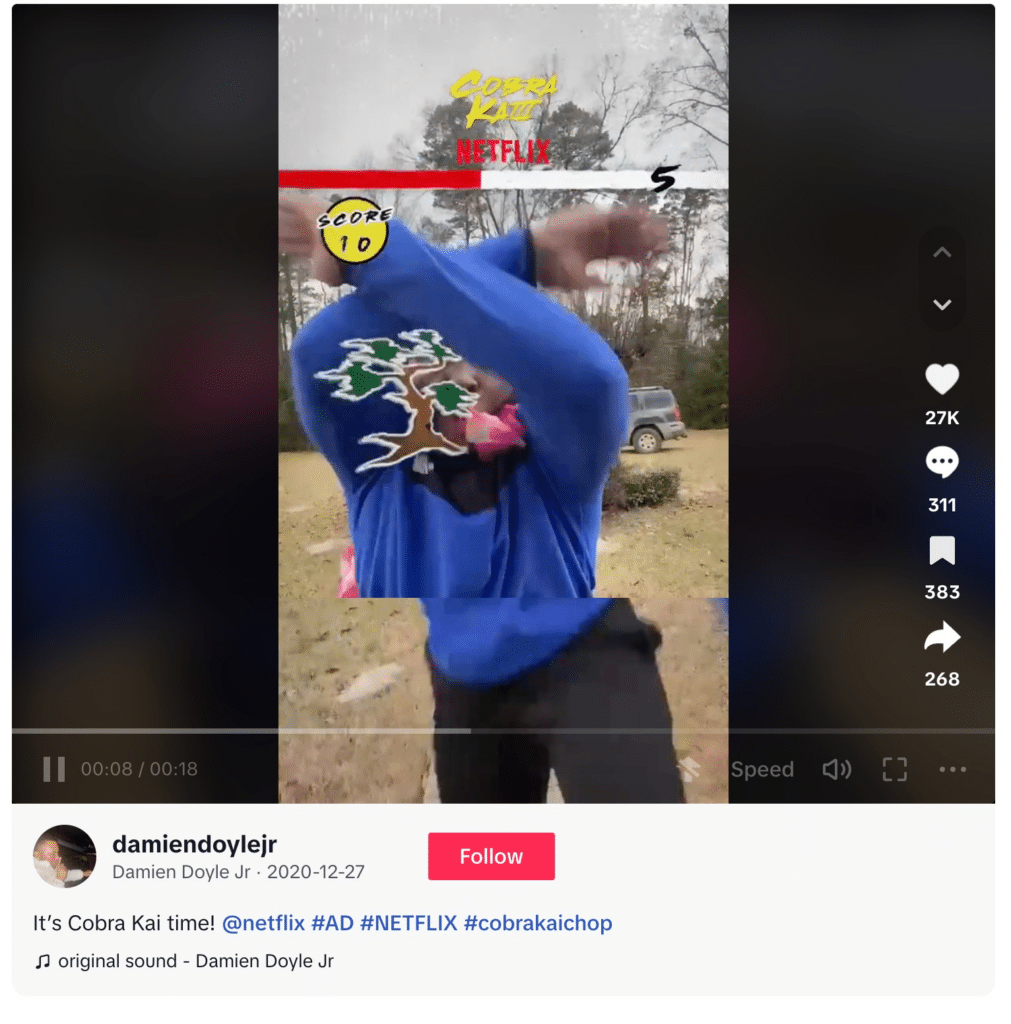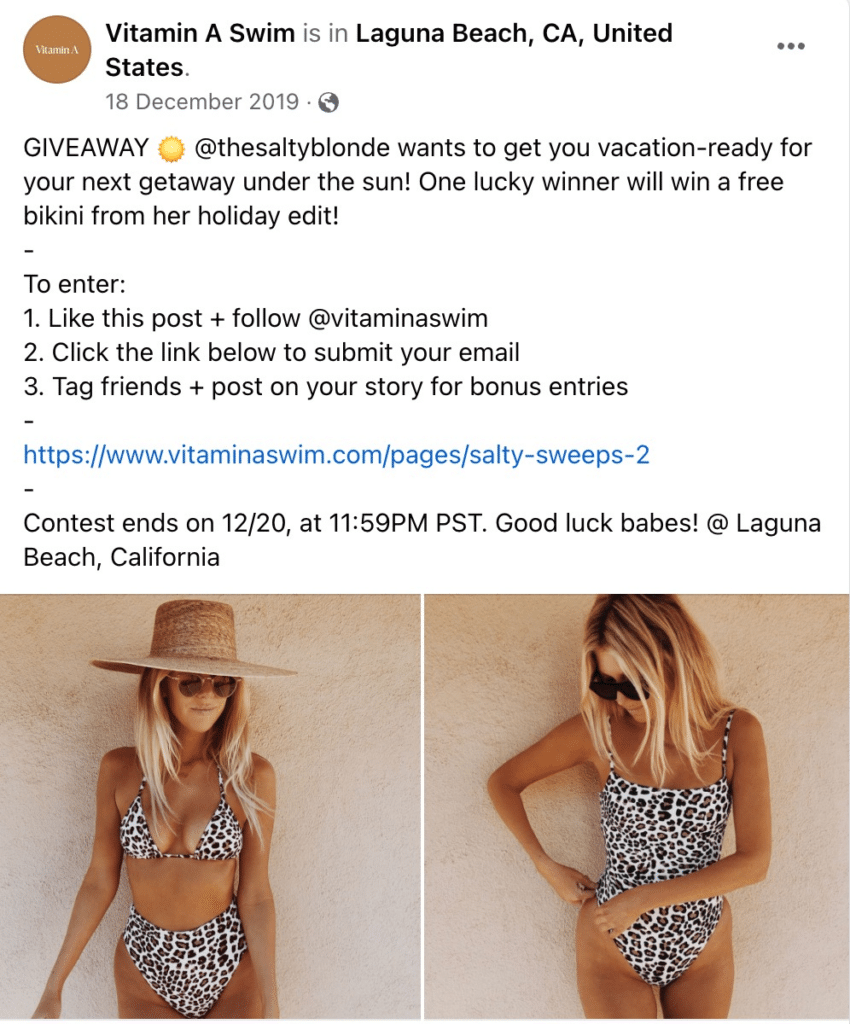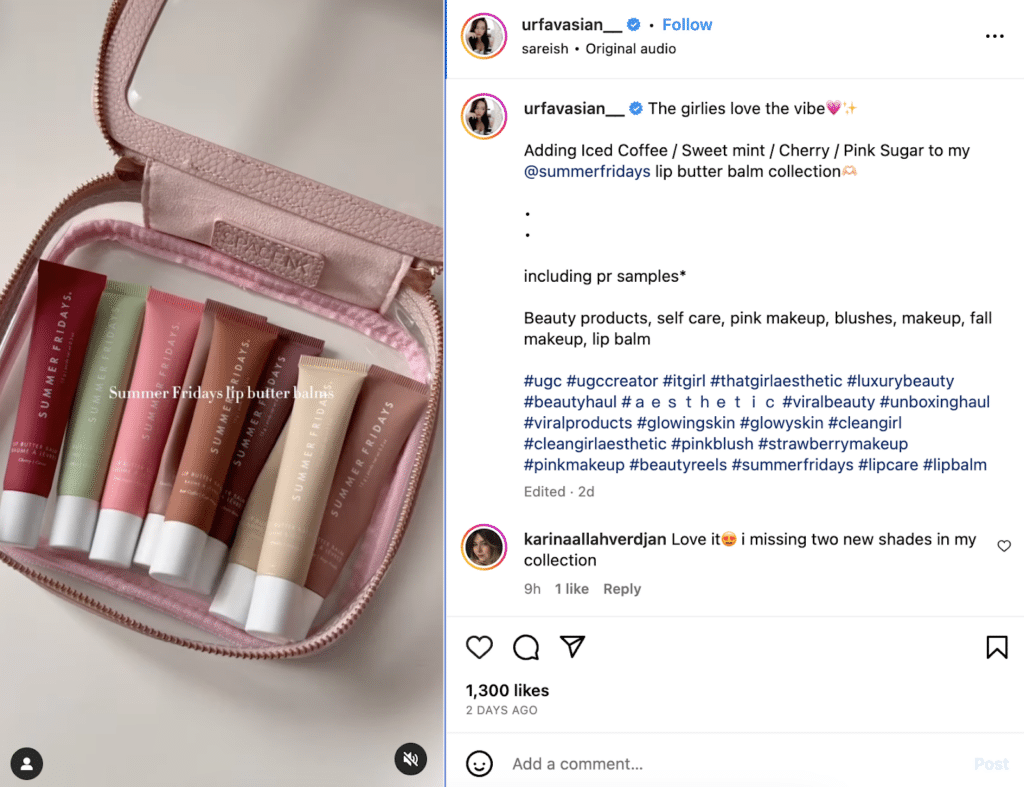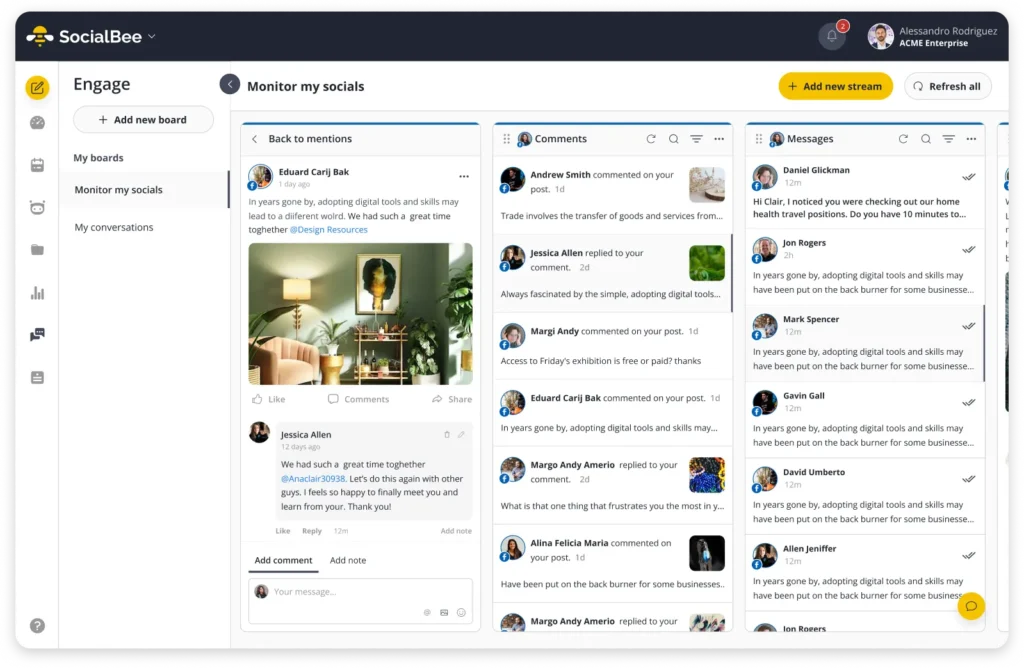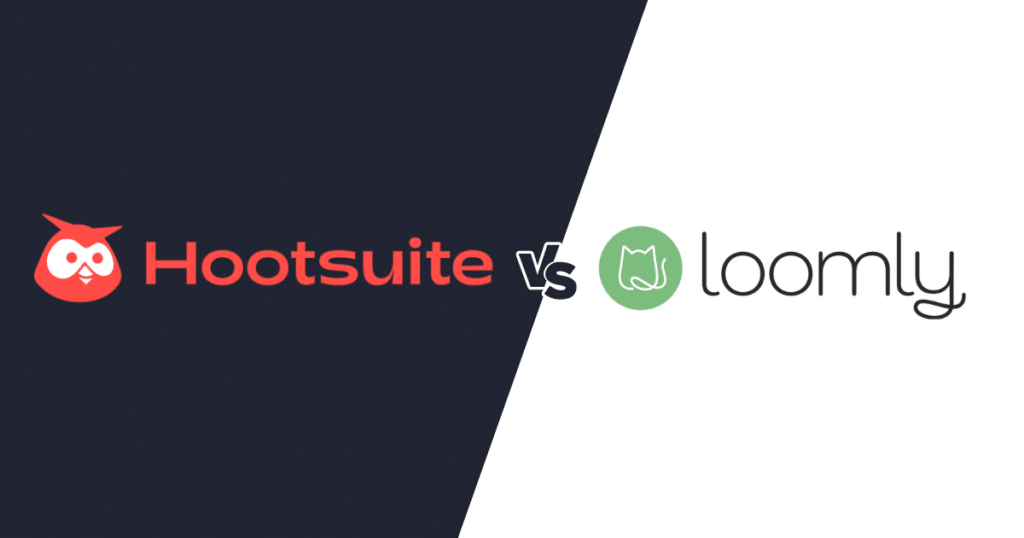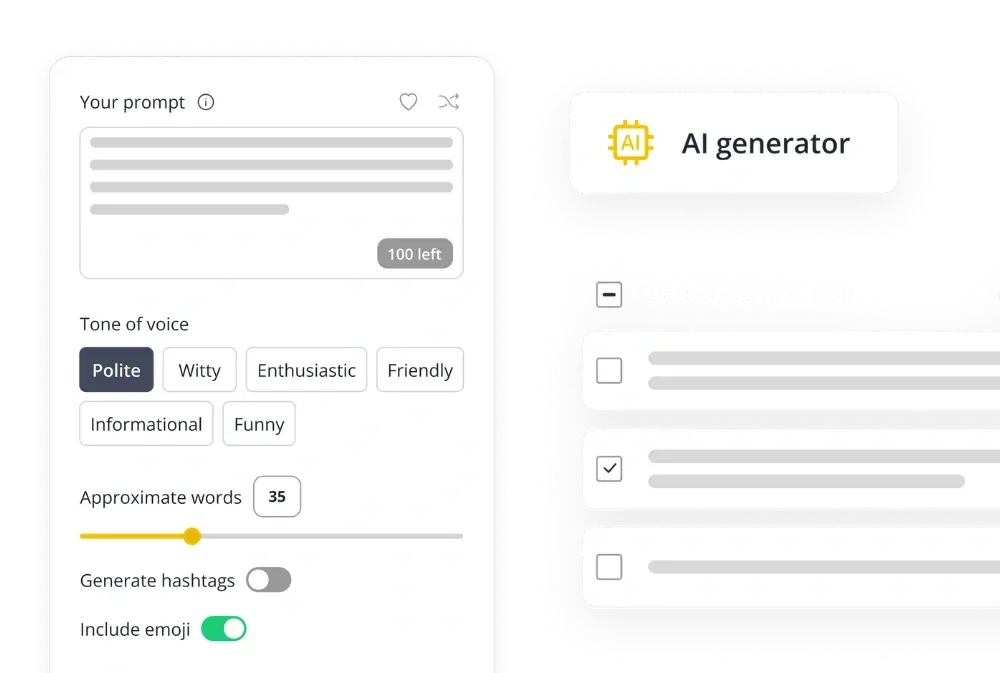
Content Writer at SocialBee
Influencer marketing trends are at their peak right now. People want to hear from genuine people, not calibrated corporate mascots. Plus, they are tired of misrepresentation and want to hear honest product reviews from people with similar backgrounds.
As of late, 61% of consumers have shown confidence in influencer recommendations. At the same time, only 38% of consumers trust a brand’s social media posts. Thus, partnering with influencers and making them part of your social presence is vital.
This article compiles the best influencer marketing practices, designed to boost your business visibility amidst never-ending competition. Implement them wisely, and you will see the first results within a few months.
We’re SocialBee LABS SRL, part of WebPros. We use the information you provide to share relevant content and product updates, as outlined in our Privacy Policy. You can opt out anytime.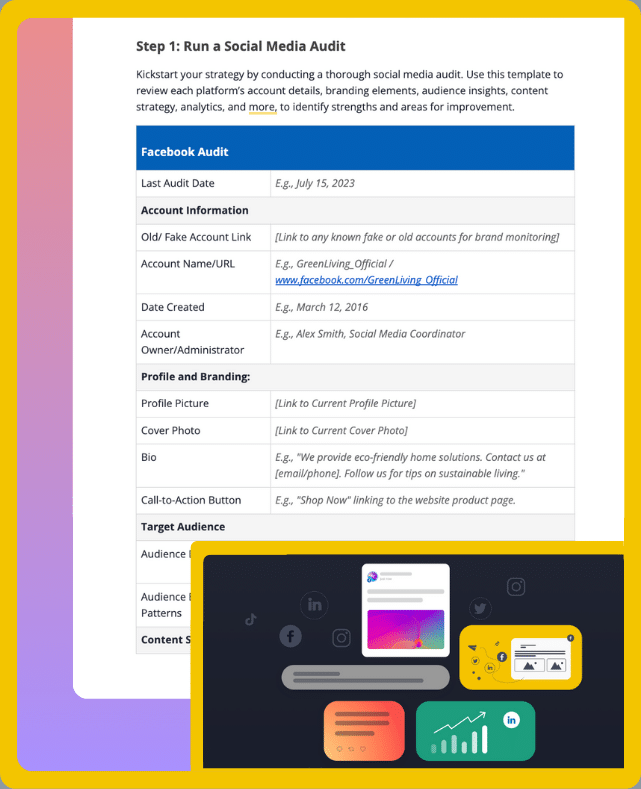
Short Summary
- The success of influencer marketing campaigns hinges on carefully chosen partnerships. Brands must identify influencers whose demographics align with their target audience and who can create content that resonates, ensuring a more targeted and effective reach.
- Influencer marketing stands out for its cost-effectiveness, particularly appealing to businesses with limited marketing budgets. By allocating resources toward targeted influencer partnerships rather than expansive traditional advertising, companies can achieve a higher return on investment.
- Key trends for 2024, such as the rise of nano and micro-influencer marketing, the growing emphasis on video content, diversity, long-term partnerships, and user-generated content creators, illustrate the dynamic nature of influencer marketing.
- Despite its potential, influencer marketing presents challenges, including finding the right influencers, navigating various platforms, creating authentic content, building transparency and trust, and measuring campaign success.
- To identify influencers who are a natural fit for their brand, businesses are encouraged to use social listening tools and conduct hashtag research.
What Is Influencer Marketing?
Influencer marketing is a strategy where brands collaborate with individuals, known as influencers, who have a significant online following, to promote their products or services.
It leverages the influencers’ credibility and reach to connect with and influence their audience.
This marketing tactic primarily thrives on social media platforms like Instagram, YouTube, TikTok, and Twitter, where influencers have amassed substantial followings.
The process typically involves brands identifying relevant influencers whose demographics align with their target audience. Once identified, brands initiate partnerships with influencers to create sponsored content or campaigns.
This content could range from product reviews and endorsements to sponsored posts, giveaways, or even branded events.
How Does Influencer Marketing Benefit Your Business?
Influencer marketing offers several key benefits for businesses in today’s digital landscape:
- Enhanced credibility and trust: Influencers are often seen as trusted authorities within their niches or industries. When they endorse a product or service, their followers are more likely to trust and consider the recommendation, leading to increased credibility for the brand.
- Cost-effectiveness: Influencer marketing can be more cost-effective than traditional advertising, especially for businesses with limited marketing budgets. Rather than spending significant sums on large-scale advertising campaigns, businesses can allocate their resources toward targeted influencer partnerships that yield measurable results.
- Authentic content creation: Influencers excel at creating authentic, engaging content that resonates with their audience. Through influencer campaigns, businesses can leverage this content to showcase their products or services in a more organic and relatable manner, thereby enhancing brand perception and visibility.
- Social proof and engagement: When influencers promote a brand or product, it can generate social proof and encourage their followers to engage with the brand’s content, website, or social media channels. This increased engagement can lead to higher brand awareness, customer loyalty, and ultimately, sales.
- Adaptability and agility: Influencer marketing allows businesses to adapt and pivot their marketing strategies quickly in response to changing market trends or consumer preferences. Unlike traditional advertising, which often requires long lead times and significant investment, influencer marketing efforts can be more agile and responsive to real-time feedback.
- Measurable results: Influencer marketing campaigns can be tracked and measured using various metrics such as engagement rates, click-through rates, and conversion rates. This data provides businesses with valuable insights into the effectiveness of their influencer marketing efforts, allowing them to refine their strategies for optimal results.
- Targeted reach: Influencers have followers who are typically interested in the content they share. By collaborating with influencers whose audience demographics align with their target market, businesses can effectively reach and engage with their ideal customers, resulting in higher conversion rates compared to broader, less targeted advertising methods.
As the influencer marketing industry continues to evolve, businesses that embrace and leverage influencer partnerships effectively stand to benefit from increased brand awareness, customer engagement, and ultimately, revenue growth.
What Are the Challenges of Influencer Marketing?
Influencer marketing continues to be a pivotal strategy for brands aiming to connect with their target audiences in a meaningful way. Influencer marketing is projected to reach $21.1 billion.
Despite its benefits, investing in influencer marketing strategies comes with several challenges:
- Finding the right influencers: Identifying influencers who not only align with the brand’s values but can also effectively communicate a unified brand message is critical. This involves understanding both the influencer’s audience and the brand’s target demographics to foster authentic connections.
- Navigating influencer marketing platforms: With a myriad of influencer marketing platforms available, choosing the right one for specific campaigns is crucial. Each influencer marketing platform caters to different audience types and offers unique engagement metrics, making the selection process key to reaching the intended audience effectively.
- Content creation challenges:
- Authenticity: Crafting content that stays true to the influencer’s style while promoting the brand’s message is a delicate balance.
- Adapting to trends: Keeping up with the latest content creation trends and platform features can be daunting.
- Engaging target audiences: Ensuring the content resonates with both the influencer’s followers and the brand’s audience requires deep insight and creativity.
- Building trust and transparency: As consumers grow more skeptical of sponsored content, maintaining transparency about the influencer-brand relationship becomes paramount. This includes adhering to regulatory guidelines and clearly communicating the nature of sponsored posts.
- Measuring success: Developing comprehensive metrics to quantify the impact of influencer marketing campaigns is challenging. Beyond reach and engagement, it’s important to assess how effectively influencer content drives conversions and aligns with overall marketing objectives.
Addressing these challenges requires a strategic approach to influencer marketing, from careful selection of influencers and platforms to creating engaging content and maintaining transparency.
By overcoming these hurdles, brands can fully leverage influencer marketing to connect with their audiences and achieve their marketing goals.
How to Find Relevant Influencers in 2024
Finding relevant influencers is a crucial step in crafting an effective influencer marketing strategy.
Here are five tips to help brands identify influencers who can resonate with their target audiences and enhance their marketing efforts:
- Identify your goals and audience characteristics
- Leverage social listening tools
- Analyze competitor collaborations
- Engage with industry-specific communities
- Conduct hashtag research
1. Identify Your Goals and Audience Characteristics
Start by clearly outlining your influencer marketing objectives and the specific traits of your desired audience, including interests, age group, location, and lifestyle.
This approach ensures you target influencers whose followers mirror your audience profile, enhancing the relevance and impact of your campaigns.
Pro Tip: Utilize SocialBee to gain deeper insights into your audience’s demographics, helping you tailor your content and strategies more effectively. Find out your social media audience demographics with SocialBee. |

A. How to Set Objectives for Your Influencer Campaign
When embarking on an influencer marketing campaign, setting clear objectives is crucial for ensuring alignment with your overall marketing strategy and measuring the success of your efforts.
Here’s a list of common objectives you might set for your influencer campaigns, along with examples:
- Increase brand awareness: Expand your brand’s visibility among potential customers. For example, a skincare brand partners with beauty influencers to showcase their products in tutorials, reaching audiences who are keen on skincare and beauty tips.
- Boost product launches: Drive attention and excitement around new product releases. Think about a tech company that collaborates with vloggers to review and demonstrate the features of a new gadget during its launch week.
- Enhance brand image: Align your brand with influencers who embody the values and lifestyle your brand wants to be associated with. Think about an an outdoor apparel brand that works with adventure and travel influencers to highlight the durability and eco-friendliness of their products.
- Drive sales and conversions: Use influencer promotions to encourage direct purchases through affiliate links, promo codes, or specific calls-to-action.
- Engage new target audiences: Reach segments of your market that are difficult to engage through traditional advertising. Here we can think of a gaming company that partners with female gaming influencers to engage more women in a predominantly male market.
- Increase social media engagement: For example, you can collaborate with an influencer on a giveaway to enhance interactions on your brand’s social media profiles to build a more active online community.
B. How to Build a Buyer Persona
Creating buyer personas is a critical step in understanding your target audience and selecting the right influencers to reach them.
Here are the steps to building effective buyer personas:
- Collect demographic data: Start by gathering basic demographic information about your typical customers, such as age, gender, location, and income level. This data can often be sourced from your existing customer database, social media analytics, or market research.
- Identify interests and lifestyle: Dive deeper into the hobbies, interests, values, and lifestyle choices of your target audience. What do they care about? What social media platforms do they use? What type of content do they consume? Surveys, social media listening tools, and direct customer feedback can provide valuable insights.
- Understand pain points and challenges: Identify the main challenges or problems your audience faces that your product or service can solve. This understanding will help in crafting messages that resonate deeply with potential customers.
- Determine content preferences: Analyze which types of content your target audience prefers and engages with most. Do they enjoy video tutorials, detailed reviews, storytelling posts, or quick tips? This will guide the content strategy for your influencer campaigns.
- Map out the decision-making process: Understand how your target audience makes purchasing decisions. What factors are most important to them? Who influences their decisions? This can help in tailoring your influencer content to effectively guide potential customers through the buyer’s journey.
- Create detailed persona profiles: Compile all the information into detailed profiles for each buyer persona, giving them names and even faces to humanize them. This makes it easier for your team to visualize and understand the target audience when planning campaigns.
We’re SocialBee LABS SRL, part of WebPros. We use the information you provide to share relevant content and product updates, as outlined in our Privacy Policy. You can opt out anytime.

2. Leverage Social Listening Tools
Utilize social listening tools to monitor conversations around your brand, competitors, and industry.
These tools can help you identify influencers who are already engaging with relevant topics and are viewed as authoritative voices within your target community.
By analyzing mentions, keywords, and trends, you can uncover potential influencers who naturally align with your brand’s message and values.
Utilizing social listening tools is a strategic way to monitor online conversations and identify potential influencers who align with your brand.
Here are some recommended social listening tools that can help in this process:
- SocialBee: An AI-driven social media management tool that includes listening features for tracking mentions of your brand on all social media platforms. It’s beneficial for identifying potential influencers and understanding the sentiment around your brand.
- Brand 24: Great social media listening tool that offers AI-powered access to mentions across social media,
news, blogs, videos, forums, podcasts, reviews, and more. - Brandwatch: Offers comprehensive social listening capabilities, allowing brands to monitor mentions across the web, analyze sentiment, and identify key influencers in specific niches or industries.
- BuzzSumo: A powerful tool for content and influencer research, BuzzSumo helps brands find the most shared content and the influencers who are promoting relevant topics on various social media platforms.
- Mention: This tool enables real-time monitoring of mentions of your brand, competitors, and industry keywords across social media and the web. It’s useful for identifying influencers who are actively engaging in conversations related to your brand or sector.
- Keyhole: Specializes in hashtag tracking and keyword monitoring, making it a valuable tool for identifying trending topics and influential voices within specific conversations on social media.
- Talkwalker: A powerful social listening and analytics tool that uses AI to monitor conversations and identify influencers across social media, news, blogs, and forums. It provides deep insights into audience behavior and content performance.
3. Analyze Competitor Collaborations
Observe and analyze which influencers your competitors are working with. This can give you insights into which influencers are already familiar with your industry and have an audience interested in similar products or services.
However, ensure that these influencers also align with your brand’s unique values and message and that they are not brand ambassadors for your direct competitors.
4. Engage with Industry-Specific Communities
Participate in and monitor social media groups, forums, and other online communities related to your industry. Influencers often emerge as leaders or active participants in these spaces.
Engaging with these communities can help you identify potential influencers who are genuinely passionate about your niche and can bring authentic value to your campaigns.
5. Conduct Hashtag Research
Hashtags are a powerful tool for discovering influencers who are actively creating content in your industry or related topics.
By searching for and following industry-specific or campaign-specific hashtags, you can uncover influencers who are not only relevant but also engaged in conversations that matter to your target audience.
This method can reveal up-and-coming influencers who have a dedicated following and are potential matches for your brand.
Here are social media platforms where hashtags are crucial:
- Instagram: Vital for content discovery and categorization, allowing users to follow specific hashtags and uncover relevant influencers.
- Twitter: Origin of the hashtag, used to categorize tweets, follow trends, and identify key voices in various fields.
- TikTok: Central to content discovery, with hashtags driving trends, challenges, and facilitating influencer identification.
- LinkedIn: Used for professional content discovery and networking, helping to find thought leaders and industry influencers.
- \s.
5 Top Influencer Marketing Trends to Watch in 2024
It’s time to move on to the main point of the article: the future trends to watch out for in influencer marketing. We encourage you to follow and use them to gain a competitive edge.
Here are 5 influencer marketing key trends to follow in 2024:
- The rise of nano and micro-influencer marketing
- Video content as a growing trend
- Focus on diversity
- Long-term partnerships with influencers
- The rise of user-generated content creators
1. The Rise of Nano and Micro-Influencer Marketing
Integrating nano and micro-influencers into your marketing strategy offers distinct advantages, primarily due to their ability to forge deeper connections with their audience.
Jeriel Melgares is a nano influencer with a focus on fashion and lifestyle, having a follower-base of almost 14K Instagram users. His Instagram feed showcases a preference for relaxed, street-inspired, and casual attire.
Notably, Jeriel has partnered with brands such as 1017 ALYX 9SM and Every Man Jack, highlighting his influence within the fashion community.
Here’s how leveraging micro and nano-influencer campaigns can benefit your brand:
- Deeper connections: Nano and micro-influencers, due to their smaller audience sizes, often have a more personal relationship with their followers. This intimacy translates to higher trust and engagement rates, making their recommendations more impactful compared to broader-reaching social media influencers.
- Cost-effectiveness: Working with micro-influencers is typically more cost-effective, allowing brands to collaborate with more social media influencers within the same budget. They are typically eager to become part of affiliate influencer marketing teams and agree to get paid only for the performed target actions.
- Authenticity and credibility: Micro-influencers are perceived as more genuine and relatable by their followers. Their content often feels more authentic, enhancing the credibility of their endorsements. This authenticity is crucial for brands aiming to connect genuinely with their target markets.
- Niche targeting: These influencer collaborations tend to cater to niche segments, making it easier for brands to target specific demographics with precision. By collaborating with social media influencers who align closely with your brand’s niche, you can ensure your marketing messages resonate more deeply with a targeted audience.
2. Video Content as a Growing Trend
As of late, video is the most prevalent content type on social media. According to the latest statistics from NogenTech, 91% of marketers use video content in their social media.
Take a look at how Netflix worked with NeoReach to promote a new season of their hit program, “Cobra Kai”:
Now, let’s move to the actionable part. Here’s how you can use video content for your next influencer marketing campaign:
- Leverage video-savvy influencers: Partner with social media influencers who excel in creating video content. These individuals understand how to craft compelling narratives that captivate their audience. When selecting influencers for a video influencer marketing campaign, assess their video production quality, engagement rates on video content, and their ability to convey messages in an authentic and engaging manner.
- Understand social media algorithms: Video content is often prioritized by social media algorithms, leading to higher visibility and engagement. Brands should familiarize themselves with the specifics of these algorithms on platforms like Instagram, YouTube, and TikTok.
- Create platform-specific video content: Tailor your video content to suit the norms and expectations of each social media platform. For instance, TikTok favors short, engaging, and often music-driven videos, while YouTube is suitable for longer-form content that delves deeper into subjects.
- Incorporate video into search engine strategies: Beyond social media, consider how video content can boost your brand’s visibility on search engines. Videos often appear in search results, especially for how-to guides, reviews, and tutorials.
3. Focus on Diversity
It’s no secret that modern consumers practically demand authentic representation, as they should.
They no longer need a perfect picture from a flawless influencer. Consumers are in an endless search for content creators that make them feel seen and represented.
Modern consumers are now holding brands accountable for their messaging, pushing for a more inclusive and representative landscape.
Sephora is committed to fostering enduring relationships by promoting diversity in its influencer marketing initiatives. In pursuit of this goal, Sephora unveiled a search for members of the #SephoraSquad via its latest influencer program, signaling a move toward greater inclusivity in selecting brand ambassadors.
Sephora selected online influencers embodying diversity across ethnicity, age, gender, nationality, and sexual orientation, prioritizing authenticity in their narratives.
The diverse group of brand ambassadors includes non-binary YouTuber Kevin Ninh, acne positivity advocate Kali Kushner, and hijab-wearing beauty influencer Aisha Mohamud.
4. Long-Term Partnerships With Influencers
The modern market is overcrowded with brands in almost any niche; therefore it’s no surprise that long-term relationships with influencers in your niche are a key influencer marketing trend for 2024.
If you don’t treat chosen influencers in your social influencer marketing strategy well, they are more likely to switch to competitors.
Here are a couple of tips for developing and maintaining long-term influencer collaborations:
- Transition influencers to brand ambassadors: Instead of one-off campaigns, consider evolving the successful influencer campaigns into brand ambassadors. This role allows them to create content consistently for your brand, deepening their connection with your products and services.
- Offer exclusive access and experiences: To keep social media influencers engaged and motivated over the long term, provide them with exclusive access to new products, services, or experiences before they are available to the public.
- Collaborate on branded content creation: Work closely with influencers in the creation of branded content. This collaboration can involve co-designing merchandise, co-creating content series, or developing signature products.
- Foster open communication and feedback: Maintain open lines of communication with your influencers, offering them support and feedback throughout the partnership.
- Provide incentives for longevity: Implement a rewards system or incentives for social media influencers who maintain long-term partnerships with your brand. These could range from performance-based bonuses to opportunities for personal growth and visibility.
Vitamin A, a swimwear brand, engaged in a strategic partnership with Instagram influencer Halley Elefante (@TheSaltyBlonde), launching a giveaway contest to showcase their collaborative collection.
This initiative not only leveraged Halley’s influential online presence but also set the stage for an enduring relationship between the brand and the influencer.
Following the success of this campaign, both parties agreed to extend their collaboration into the future.
5. The Rise of User-Generated Content Creators
With over 80% of companies incorporating user-generated content (UGC) into their marketing strategies, the significance of this trend within the influencer marketing landscape cannot be overstated.
When a suitable post is identified, the brand may acquire the rights to use this content on their own pages.
This strategy not only showcases real-life applications of products but also transforms average users into authentic influencers brands connect with, offering a fresh and relatable perspective to potential customers.
Here’s an example of UGC content:
To leverage user-generated content, keep in mind these tips:
- Encourage your customers to share: Motivate your customers to post about their experiences with your products on social media platforms. This can be facilitated through incentives like contests, discounts, or features on your brand’s official channels.
- Seek permission and offer recognition: Before using user-generated content, always obtain permission from the original creator.
- Incorporate UGC into your marketing mix: Integrate user-generated content across your marketing channels—be it on your website, in email campaigns, or across other social media platforms. This demonstrates brand authenticity and leverages the voices of your customers to attract new potential customers.
- Create a hashtag for your brand: Develop a unique hashtag that encourages users to share their content with a broader audience.
- Leverage UGC to foster brand loyalty: Showcasing real customer experiences enhances credibility and fosters brand loyalty. Celebrate the diversity and creativity of your customer base.
- Monitor social media for potential UGC: Monitor and engage with your social media mentions with tools like SocialBee’s Engage Module to enhance your marketing strategy by leveraging authentic user interactions.
Stay on top of your social media game by monitoring your incoming UGC.
Start your 14-day free trial now!
This ensures that every interaction is managed efficiently, contributing positively to the development of your brand and the nurturing of client relationships.
By leveraging such tools, brands can effectively gather and utilize authentic user experiences, making the process of engaging with and recognizing valuable UGC both simpler and more impactful.
Frequently Asked Questions
In 2024, the influencer marketing landscape is increasingly prioritizing ongoing, long-term partnerships between brands and influencers as a key trend. This shift towards sustained collaborations underscores the importance of building genuine brand affinity and deeper audience engagement over time.
Such partnerships facilitate consistent brand messaging through trusted voices, enhancing trust and authenticity.
Influencers have increasingly become a central part of marketing strategies for brands worldwide, suggesting that they could indeed be a significant part of the future of marketing.
The rise of social media platforms and the ability of influencers to reach and engage specific audiences with authenticity and trustworthiness have made influencer marketing a powerful tool.
Influencer marketing campaigns have proven to be highly efficient, leveraging the targeted reach and authentic engagement that influencers have with their audiences. A study by the Influencer Marketing Hub reported that for every $1 spent on influencer marketing, businesses are seeing an average return of $5.20.
This marketing strategy is particularly effective because influencers can connect with niche audiences, ensuring that brand messages are seen by those most likely to be interested.
The authenticity and trust that influencers cultivate with their followers translate into higher engagement and conversion rates, often surpassing traditional advertising methods.
Ready To Include Influencers in Your Marketing Strategy?
As you start crafting your own influencer marketing campaign, remember the significance of partnering with the right influencers. It’s not just about expanding your brand’s presence on social media and other digital platforms, but also about engaging with new audiences across the globe meaningfully.
Keep in mind the tips and inspirations provided here, as they are instrumental in guiding your influencer collaborations. These strategies are your stepping stones toward elevating your brand to unprecedented levels of success.
Ready to make the most out of your influencer marketing content? Start your 14-day free SocialBee trial now!


